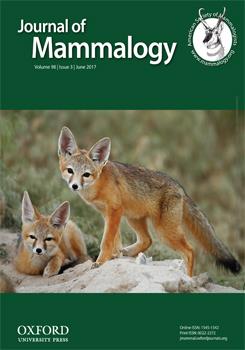Microhabitat conditions affect foraging by small mammals. We investigated the effect of vegetation (vertical cover, coarse woody debris, size of trees) and illumination (cloud cover, lunar illumination) and their interactions on patch use and foraging by white-footed mice (Peromyscus leucopus) in deciduous forests in southwestern Ohio. We positioned feeding trays containing sunflower seeds mixed into sand with 1 seed placed on top of the sand on 5 grids during summer 2010 to measure patch use (removal of seed on top of the sand) and foraging intensity as GUD (giving-up density measured as proportion of seeds eaten). We used generalized linear mixed-effects models to determine how vegetation and illumination affected patch use and foraging. Patch use increased with increasing low vertical cover (LVC) and decreased with increasing lunar illumination likely because of a perception of risk of predation. If mice remained in a resource patch, foraging was explained by a more complex interaction between LVC, moon, and cloudiness. Little foraging occurred when LVC was low. At moderate levels of LVC, foraging decreased with increased lunar illumination, but increased when increased cloud cover decreased lunar illumination. For high levels of LVC, foraging increased on cloudy, dark nights and also on bright, cloudless nights. Our results differ from other foraging studies that examined only the effect of a single variable on foraging. We determined not only that different factors affect patch use and foraging, but also that foraging was affected by the interaction of LVC, lunar illumination, and cloud cover. Our results indicate that factors affecting habitats used (sensu lato) by white-footed mice differ from the broader factors that affect foraging decisions. Our results also may explain disparities of previous studies of foraging by white-footed mice that examined the effect of light levels or vegetative cover without considering their interactive effects.
How to translate text using browser tools
23 February 2017
Interactive effects of vegetation and illumination on foraging behavior of white-footed mice (Peromyscus leucopus)
Suellen A. Jacob,
Stephen F. Matter,
Guy N. Cameron
ACCESS THE FULL ARTICLE

Journal of Mammalogy
Vol. 98 • No. 3
June 2017
Vol. 98 • No. 3
June 2017
cloud cover
giving-up density
lunar illumination
microhabitat
space use
vertical cover




